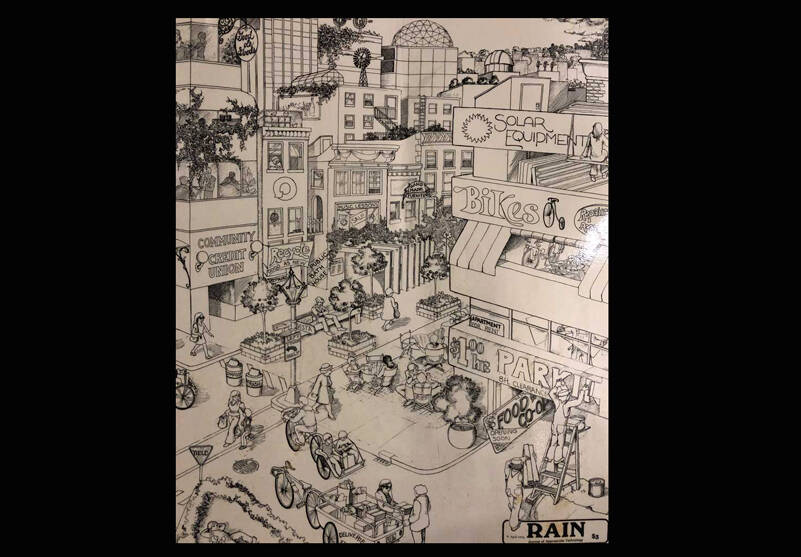By Morf Morford, Tacoma Daily Index
Long ago and far away, or at least it seems that way, how and where we lived was easily defined in three broad categories; urban, suburban and rural. Zoning, traffic and state budgets were based on the needs, preferences and priorities of each one of these areas.
Looking back on it, that organizational principle seems simple. Maybe even naive.
As with every other aspect of life it seems, when it comes to cultural or social organization, that was then, and this is definitely a very different now. And, as you may have noticed, “now” is a very strange place.
A generation ago, it was pretty straightforward; we either lived in a city, a suburban neighborhood or “out” in the country. The distinctions were clearly defined.
On a global level, more than half of the world’s population lives in urban areas. In poorer countries, most residents are (often painfully) aware of their residence in blatantly urban or rural areas.
Over history, urban areas, from Jerusalem to Rome to London or Paris and many more, have been the source of opportunity, power, wealth and influence – and decadence and corruption. Much of literature, art and cultural legends and assumptions emerges from the mutual distrust of city dwellers and villagers.
The word “villain” is based on the word “villager”. In legend, and often in fact, “outsiders” (and their values, food or beliefs) were, in most cases, immediately suspect.
Enter the suburbs
In the past hundred years or so, “suburban” life emerged. This was not as dense (or as in the case of European cities, as filthy and disease-ridden) as urban centers.
A few hundred years ago the wealthy lived in cities, the poor lived in the country, there was essentially no “middle”.
As industrialization took hold, (and everything associated with it, from paved roads to public schools) our landscape changed with it.
Entire cultures around the world have tilted toward “suburban” centers – or at least away from what had been the traditional urban/rural divide.
One set of trends impacts our cities – and to a large degree cities around the world; rural areas have moved in conservative directions and urban areas have become even more liberal over the past two decades or so. The suburbs are almost evenly divided between the two philosophical poles.
More and more of us live (or aspire to live) outside of both cities and rural areas. Since 2000 for example, suburban county population grew by 16% compared with increases of 13% in urban areas and 3% in rural counties.
In the USA, urban areas, especially on the coasts, have grown in wealth while rural areas have generally become poorer. And emptier.
Oddly enough, suburbs have seen much sharper increases in poverty since 2000 than urban or rural counties – a 51% increase, compared with 31% in cities and 23% in rural areas.
Urban areas attract younger people, while rural areas attract (and keep) older residents.
Many rural areas around the world, from Italy to Japan to Oklahoma are offering bonuses, from cash to free houses, to young people willing to fill their rapidly emptying spaces.
In short, everything has changed. As did our career options, the media we shared, the food we ate and how we lived on a daily basis. From electricity to internet access, we all, regardless of income, education or even personal preference, share what could only be called an urban value system and experience.
Whether we chose it or not, most of us find ourselves enmeshed in urban technologies, attitudes and assumptions.
Working from home
Thanks to technology and a boost from the pandemic, the work from home (WFH) movement emerged.
Industrialization (among other things) meant that employment, instead of being at home, was at centralized points.
Trains, and later, highways allowed workers to travel more than a walkable distance to places of employment; commuting was born.
And then, of course, the work from home (WFH) movement came about. Suddenly, for some of us at least, where we lived was not irretrievably tied to where we worked.
In short, for some of us at least, where we work has little necessary resemblance to where we work.
See more information at the Pew Research Center.
For better or worse, industrialization frames and defines all of us, from the food we buy (and where we get it and where it comes from) to the videos we see to the way we live.
One of the many ironies of this move we all seem to have made (deliberately or not) toward industrialization is that we find ourselves somehow transcending our much-vaunted divisiveness and, again, by choice or not, find ourselves conforming to a common pattern, one so obvious that we rarely even notice it.
Who among us, for example, doesn’t go to Coscto, own a smartphone, buy endless packages online, use streaming, spend too much time staring at screens, or know who Taylor Swift is? We inhabit the same atmosphere and take in, usually without noticing it, the same cultural influences.
We may or may not like or appreciate them in the same ways, some might inspire us, others may horrify us, but we breathe in, and try to make sense of, the same influences. We may react differently, but for most of us, no matter who we vote for, what we believe in, or what we watch, beyond the details, we find ourselves in the same “urban” landscape.





